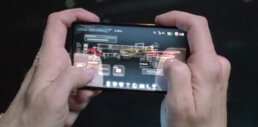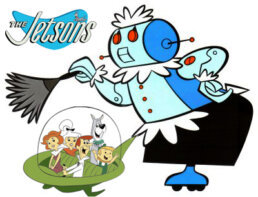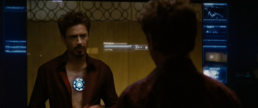“Every science fiction movie I have ever seen,
any one that’s worth its weight in celluloid,
warns us about things that ultimately come true.”
—Steven Spielberg
As if building the perfect home with the right materials wasn’t hard enough, now we added the complexity of “Internet of Things”. The home is an extension of our families. We spend our lives and most of our savings on them. In the past 3 years there has been an explosion of all the smart home devices throughout the industry. Companies are racing to be the supplier of the Smart home management system, which currently sits at 1.5 million in current homes, estimated to reach 15 million in 4 years. There are multiple companies in this market and its tough to say who will be the leader. All are slightly different systems driving similar capabilities.

THE AMAZING RACE
Alarm companies are already in the home and have a slight advantage since the customer is familiar with them and would extend their system to add features like cameras, temperature control and lighting. Don’t be fooled, Google launched 2 new smartphones, some AV devices and a surface-like tablet. Insteon, Control4, Samsung and Lowe’s Iris are some of the other players in this realm. Time will tell but my spidey sense tells me that Alphabet will be high on that list.
Of course the design and “easy” usability of these systems will be the difference maker, especially when the offerings are so similar. All these different devices that speak to each other become a huge design and usability challenge to keep the user engaged and delighted with its output. Technology is advancing at an accelerated pace which is rapidly saturating the market with devices making the consumer experience more important then ever!
It also becomes a re-education for the “regular” family to have to rethink and change the way they live and interact in and out of the home. You no longer have to run back home to check the alarm or see if you left the lights on. These different home management systems take care of all this and more. Since our home is an extension of us then it should represent and have characteristic traits of all the family members. I’m not just talking about colors on the bedroom walls or a specific home décor. With the plethora of options its really up to the consumer to figure out what qualities of these home systems are important to them and always leave room for expansion. Are you the type of person that likes to read all the data and see every detail, or do you just want simple conveniences? Of course anything you select should have the ability to control your devices internally and externally from your home.

The Jetsons: One of my favorite cartoons growing up because it transported me into the future. Since it was a cartoon it felt further from reality but now we know better. Robots are already in the home, I have a Roomba nicknamed Rosie and now appliances and other devices in the home communicate clearly across platforms and brands via the IOT. When we developed concepts for all the devices in Tony Starks universe (Iron Man) we used the Jetsons as one of our many inspirations. From the interface to enter his lab/garage to the smart mirror. We designed these in a way that was not to far into the future but just enough that the audience believed it could happen soon. 2 years later (2010/2011) we saw Samsung, LG and other consumer brands release smart mirrors at CES using our vision as inspiration this time. Cut to today and these devices are now being built by individuals (Great job Max!), bringing science fiction to life.

I currently have the Conrol4 system in my home that I installed a couple years back. I can remotely control everything from temperature, TV, multi-room audio, lighting, surveillance/security and more. I also have the ability to open my garage door with my phone using Chamberlains MyQ Gateway application. This easy access to everything is a huge plus when we are away or at work and school. This convenience was a little much for my wife at the beginning but after a few “log ins” she cant live without it, especially with a busy lifestyle with kids sports and other activities on weekends. Setting temperature control and lighting “scenes” for different times and rooms is easy and maximizes our energy usage which saves money throughout the year. Currently I have to set all the temperatures and lighting scenes. The next generation of smart home will need to learn the behaviors (like Nest) of the people in the household and adapt to their needs.
The “digital” home needs to create a personality or soul of its own. These devices should all be part of that personality. It adds luxuries and the ease of use, it shouldnt cloud or confuse the user.( Similar to Tony Stark when he is speaking to Jarvis.)
Understanding the needs of the home owners and fulfilling them (sometimes alerting before an issue arises) with added value is key to the success for the smart home platform. Imagine your home looking up the weather forecast to tell you that a strong storm might be coming and running your generator or sump pump to make sure everything is in top form. Or once you get home the system rearranges content on the cable box or loads your profile on Netflix before you even turn your tv on.
ADVANCEMENTS
In the near future these systems and interfaces in the homes will be “living/breathing digital forms”. They will become a part of the family and know the day to day activities. For example the smart homes “heart” rate in the morning is high – getting the kids up for school, breakfast, weather, starting the car, traffic, train delays. Your house should have a variety of these items ready before you even think of them. Once its middle of day the heart rate of the home should be more relaxed and consume the least energy. During this time of the day it launches the Roomba to vacuum the home and do an overall system check or upgrade which is preferable since interruptions will be minimal. Once the kids get back home from school it jumps right into “alert” mode, being able to customize settings for the multiple users that have returned. Checking Wi-Fi connectivity for all devices, bedroom lights go on for studying, the kitchen lights turn on with the recipe for dinner displayed on a screen.
How do smart homes relate to real estate?
This 2015 real estate survey by Coldwell Banker sheds light on how everyone is expecting smarter homes when purchasing a new home.
A survey of more than 500 sales associates affiliated with the Coldwell Banker®brand found:
- Buyers are asking, “How smart is this home?”: Nearly two in three (64 percent) of the sales associates surveyed agreed that buyers today are more interested in homes with smart home features and technology than they were two to five years ago.
- Buyers want to control their home from their smart phone : 62 percent are seeing more buyers interested in controlling their home technology through their smart phone or tablet now than they were two to five years ago.
- Listings are getting smarter: Nearly 60 percent said they are seeing more smart home features in listings than they did two to five years ago.
- Smart homes sell faster : One in three (33 percent) noted that homes with smart home features and technology sell faster than homes without them.
Gen X is the “smartest” generation of home buyers today: While it’s no surprise that almost half of sales associates are seeing Millennials (age 18-24) interested in homes with smart home features, even more (57 percent) identified Gen X (age 35-49) as the top buying group interested in smart home technology. You can read the rest of this article here.
INSURANCE RAMIFICATIONS
Like autonomous vehicles these smart homes will have an impact on insurance coverage. Homes will be able to detect and possibly avoid problems before they become actual issues. This will save insurance carriers and homeowners millions and more importantly the “headaches” that come with these devastating damages.
CONNECT CAR TO HOME
Of course all the advancements in the automobile world will play a huge role in the smart home. As you pull up in your driveway, specific lights turn on, perhaps the coffee machine start to brew a hot coffee since its cold outside. The thermostat is set back to “normal” since you were out for so long and it adjusted (lower) for energy consumption. Your garage door will automatically open without touching a remote. The communication from your car to your home will be second nature.
ENVIRONMENTAL
Controlling comfort and other usages in the home actually help the environment. Since the home is constantly adjusting its activities and realizing the usage of the family it can adjust accordingly. It can adjust the temperature at night when everyone is asleep (Reduction in oil/gas/electric) and automatically turn off lights at night. Imagine all the homes across America running like a well-oiled machine but costing less and creating less drag on the environment. Similar initiatives are being looked at in factories as well.
It’s an exciting time we are living in. Our homes are finally catching up to the technology! Its going to be even more exciting to see all the future advancements that will enrich our lives and make our home an even better place then we could have ever imagined.
Danny Gonzalez
Daniel Gonzalez started his career at R/GA after graduating from St. Johns University where he received a BS in Business. For 6+ years he lead the visual effects team for feature films, global ad agencies and broadcast networks. In the Fall of 2001, Gonzalez co-founded Perception with an RGA colleague, Jeremy Lasky. They formed a motion graphics studio that lead the revolution in creating groundbreaking design and visual effects on the desktop. Now in it's 18th year, the studio has sharpened its focus to become global experts in designing futuristic UIs for both feature films and for the most powerful brands in technology. From Iron Man to IBM, from The Avengers to SpaceX, the studio has an extremely unique niche that truly bridges the gap between science fiction and science fact. Gonzalez co-leads new business initiatives, shapes the company’s growth, while overseeing a full-time staff of 15.
Perception has been featured on Engadget, Art of the Title, Cinefex, Gizmodo, ACM Siggraph, ADC nominated at SXSW for Best Title Sequence and twice nominated for an Oscar for Best Visual Effects. Gonzalez has lectured/guest speaker on design and technology at OTIS, SCAD, Boeing, Carnegie Mellon’s ETC and NYU ITP. He's also given presentations and workshops at some of the biggest tech giants in the world including Samsung, SpaceX, Intel, Microsoft, GE, Northrop Grumman, Audi, Mercedes, Ford, Chrysler and Apple.
Gonzalez’s past work has been showcased on the film screen and televisions across the world, while Perception’s work can be experienced on the big screens, in smart homes, automobiles and mobile devices across the planet!


